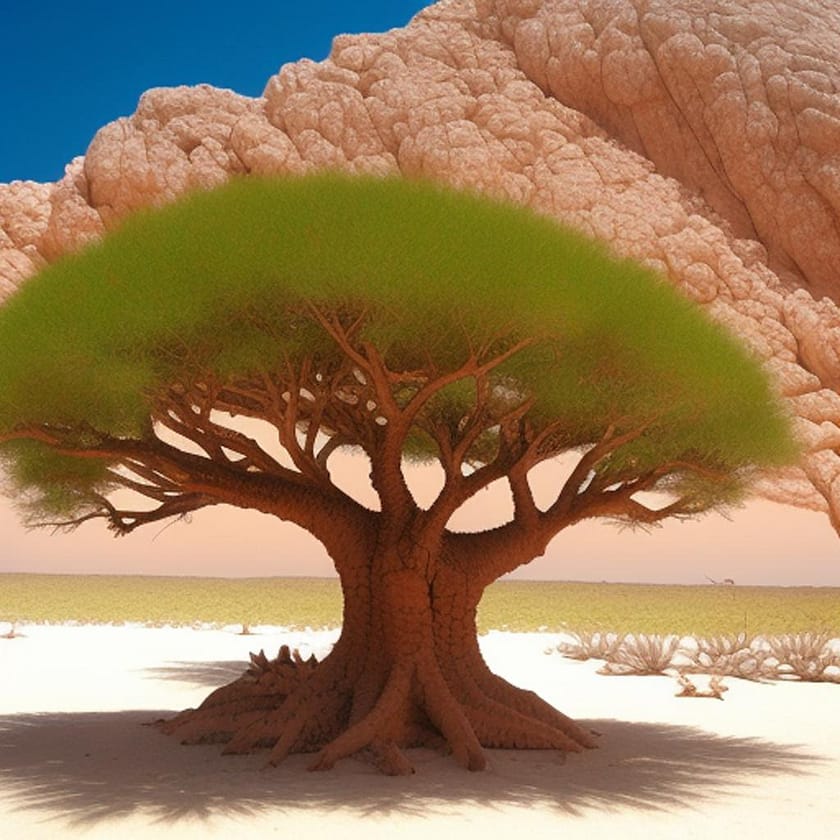Socotra Biodiverse Island
The Island of Socotra is an archipelago located in the Indian Ocean, around 240 kilometers east of Somalia and 380 kilometers south of Yemen. It is considered one of the most biodiverse places on Earth, with a unique ecosystem that includes a number of plant and animal species found nowhere else on the planet.
The island’s isolation, along with its hot and dry climate, has allowed it to develop a distinct flora and fauna that has adapted to its harsh conditions. Some of the unique species found on the island include the dragon’s blood tree, the Socotra desert rose, and the Socotra starling.
Socotra has been inhabited for thousands of years, and its people have developed their own distinct culture and language. The island has been ruled by various empires and powers throughout history, including the Persians, the Portuguese, and the British, before becoming part of Yemen in the 1960s.
Despite its remote location and relatively small size, Socotra has attracted the attention of scientists, conservationists, and adventurers from around the world who are drawn to its unique biodiversity and stunning landscapes. The island was designated a UNESCO World Heritage Site in 2008.
The dragon’s blood tree, the Socotra desert rose, and the Socotra starling
The Island of Socotra, located in the Indian Ocean, is home to some of the most unique and fascinating plant and animal species on Earth. Three of the most iconic and recognizable species found on the island are the dragon’s blood tree, the Socotra desert rose, and the Socotra starling.
The dragon’s blood tree, known for its unusual shape and striking red resin, is a member of the genus Dracaena. This tree can grow up to 10 meters tall, with a thick trunk and dense crown of spiky leaves. The name “dragon’s blood” comes from the tree’s crimson sap, which was historically used as a dye, incense, and medicine. The resin is still harvested today, although the practice is regulated to protect the species.
The Socotra desert rose, also known as Adenium obesum, is a succulent plant that produces striking flowers in shades of pink, red, and white. This plant can grow up to 3 meters tall, with a thick, swollen trunk that stores water for dry periods. The desert rose is a popular ornamental plant in many parts of the world, prized for its unique shape and colorful blooms.
Finally, the Socotra starling is a small, black bird with a striking white patch on its wings. This bird is found only on the island of Socotra, and is thought to have evolved there in isolation from other starling species. The starling is known for its melodic song, and is a popular sight among birdwatchers who visit the island.
The unique species found on Socotra are the result of millions of years of evolution in isolation. The island’s dry and rocky landscape, along with its isolation from other land masses, has created a unique environment that has allowed these species to thrive. Despite their beauty and value, these species are also threatened by human activities such as deforestation, overgrazing, and habitat destruction.
Efforts are underway to protect these iconic species and the fragile ecosystem of Socotra as a whole. Conservationists are working to raise awareness about the importance of preserving this unique island and its biodiversity, and to promote sustainable practices that can help protect these species for generations to come. Through education, research, and conservation efforts, the dragon’s blood tree, the Socotra desert rose, and the Socotra starling may continue to captivate and inspire visitors to this remarkable island.
Table with the classification, characteristics, planting and flowering seasons, and soil preferences for the dragon’s blood tree, the Socotra desert rose, and the Socotra starling
| Species | Classification | Characteristics | Planting season | Flowering season | Soil preferences |
| Dragon’s blood tree | Genus: Dracaena | Height: up to 10 meters; spiky leaves and red resin | Any time of the year | April to August | Well-draining soil; prefers limestone and rocky soils |
| Socotra desert rose | Species: Adenium obesum | Height: up to 3 meters; swollen trunk and colorful flowers | Spring or fall | Spring and summer | Well-draining soil; prefers sandy or gravelly soils |
| Socotra starling | Species: Onychognathus frater | Size: 22-24 cm; black with white patch on wings; melodious song | N/A (wild bird) | N/A (wild bird) | N/A (wild bird) |
The planting and flowering seasons listed here may vary depending on climate and other environmental factors, and that the soil preferences listed are general guidelines. For specific planting and care instructions, it’s best to consult with a local expert or horticulturist.

Source OpenAI’s chatGPT Language Models, Dalle, AI trot and Fleeky
images Picsart and MIB
Thank you for likes, shares and comments! 🌳🌴🌲🌵
Invest in your future
Take time to learn
Embark on your journey in affiliate marketing and website creation alongside an incredible community and myself. Invest in your future by dedicating time to learn and earn. Take all the time you need to master the basics before aiming higher. Give it a try and sign up for free. You won't regret it! Discover the possibilities for yourself...


